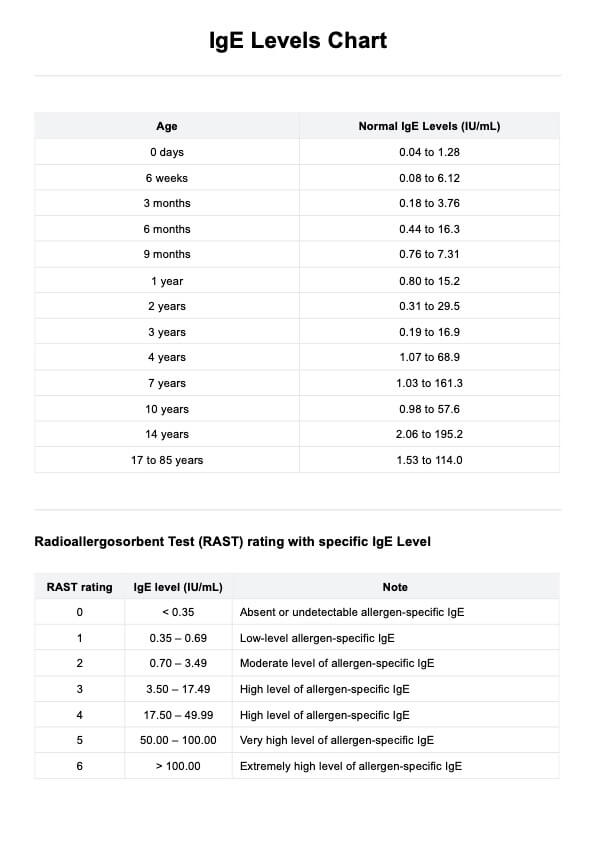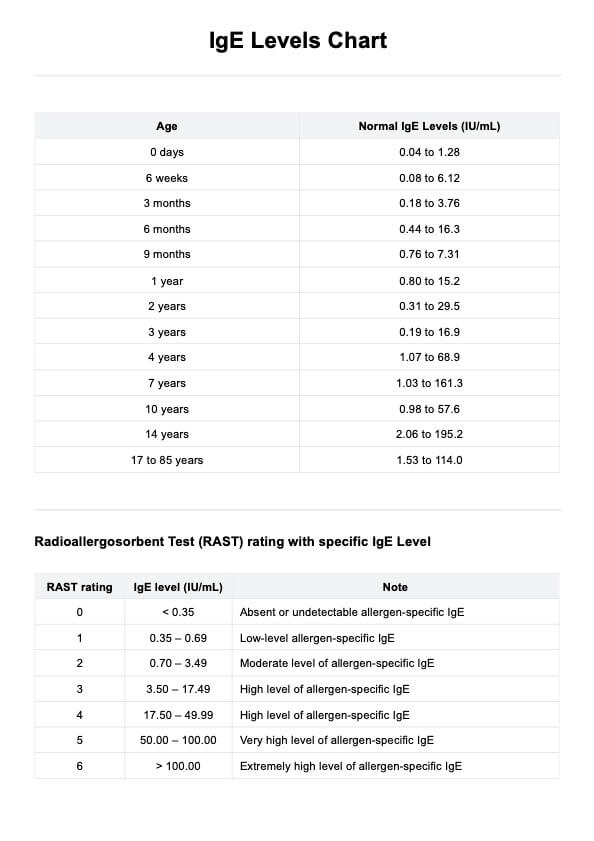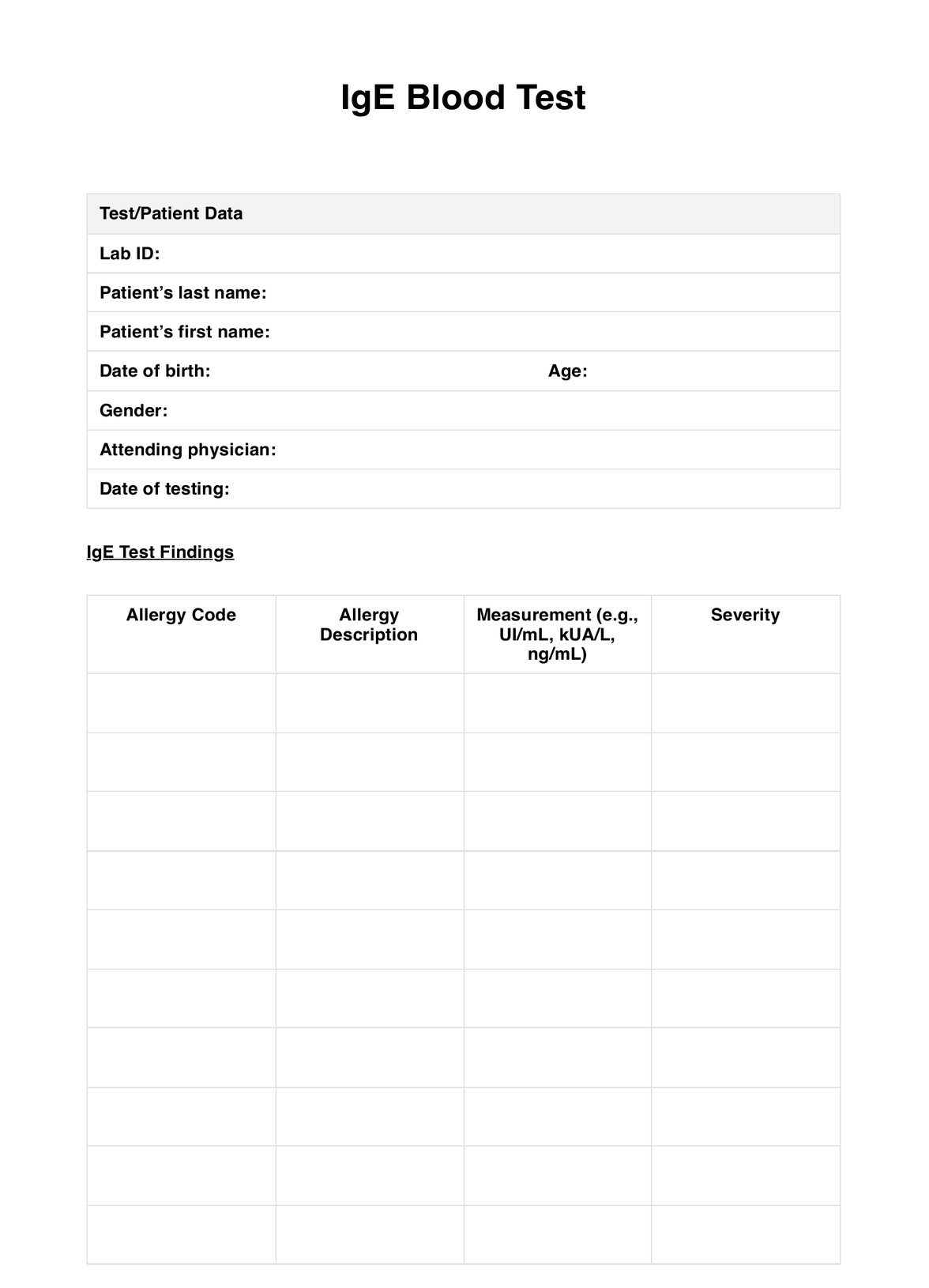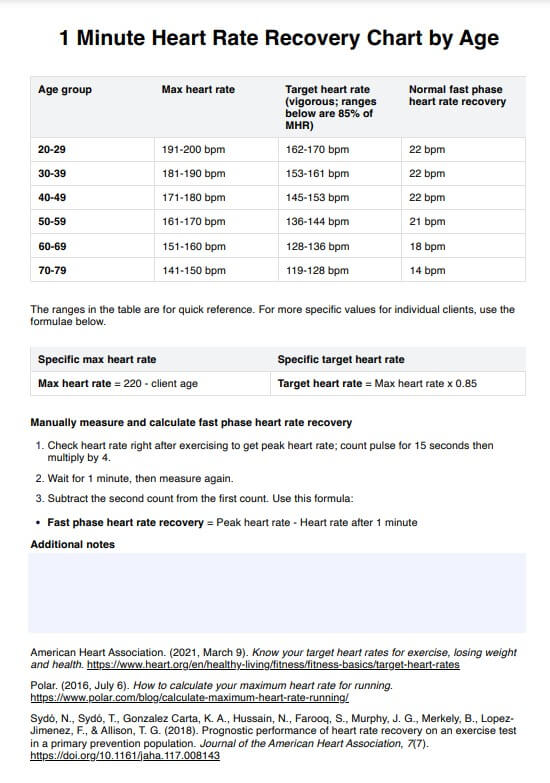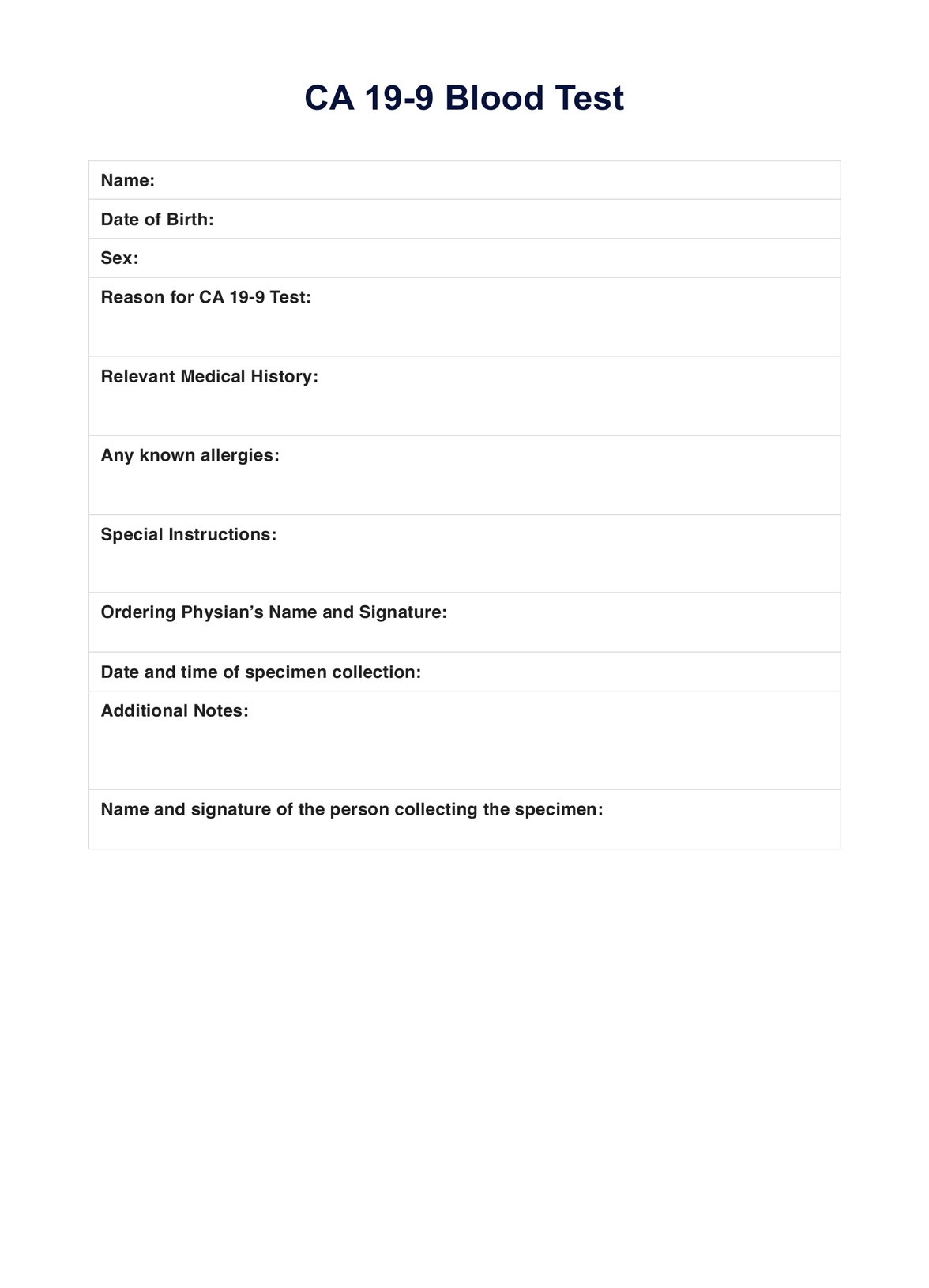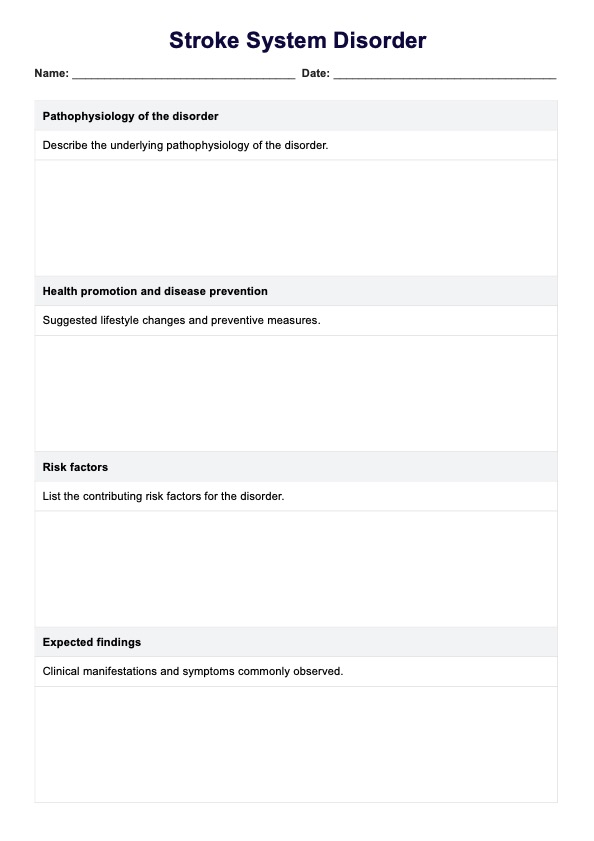IgE Levels Chart
IgE Levels Chart: Comprehensive visual guide detailing normal and allergen-specific IgE levels by age, from newborns to adults, including RAST ratings.


The IgE antibody
The IgE antibody, or Immunoglobulin E, is a class of antibodies primarily associated with allergic reactions and asthma. It plays a crucial role in the body's immune response to allergens. When an allergen enters the body, it triggers the production of specific IgE antibodies. These antibodies bind to immune cells like mast cells and basophils, releasing inflammatory substances like histamine, which cause the symptoms of an allergic reaction.
IgE is also involved in immunity against parasites. However, in developing countries with less common parasitic infections, IgE is more associated with allergies and allergic diseases such as hay fever, food allergies, and atopic dermatitis.
Understanding IgE levels can be important for diagnosing and managing allergic diseases. Elevated IgE levels can indicate allergic sensitivity, but they must be interpreted in the context of clinical history and specific allergen testing. The Radioallergosorbent Test (RAST) is one method used to measure specific IgE antibodies to particular allergens, helping to pinpoint specific allergic triggers.
IgE Levels Chart Template
IgE Levels Chart Example
What are normal IgE levels in adults?
Normal IgE levels in adults can vary widely depending on individual factors and the specific reference ranges used by different laboratories. However, as a general guideline:
- The typical range for normal IgE levels in adults is 3 to 423 International Units per milliliter (IU/mL).
- The median level, representing the middle value in a population sample, is often cited as around 39 IU/mL.
It's important to note that various factors, including age, gender, genetic predisposition, environmental exposures, high IgE levels, and relevant symptoms, point towards an allergic etiology in allergic rhinitis or asthma and can influence normal IgE levels. Additionally, having IgE levels within this range does not necessarily mean an individual is free from allergic diseases, as specific IgE antibodies to particular allergens might still be present and cause allergic reactions.
How does our IgE Levels Chart work?
If you typically handle patients who have allergies, asthma, allergic rhinitis, atopic dermatitis, etc., you can check out our IgE Levels Chart. You may use this chart to help remind yourself of the normal IgE levels per age whenever you're conducting tests to determine IgE levels. It also comes with reference values for radioallergosorbent tests (called RAST for short), which is a type of test meant for determining IgE levels in a patient.
Test types
There are several types of IgE tests, such as an IgE serum test. Other examples are skin prick tests, complete blood counts, patch tests, and basophil activation tests. The one that's important to our template is:
Radioallergosorbent test (RAST)
- Purpose: Measures specific IgE antibodies to particular allergens.
- Use in allergy blood testing: Helpful in situations where skin tests can't be performed, such as with severe skin conditions or when patients take medications that interfere with skin testing.
- Allergic disease diagnosis: Useful in diagnosing specific allergic triggers in allergic rhinitis, food allergies, and other allergic conditions.
Notes on IgE and allergic diseases
- Normal IgE levels: Understanding the normal range of IgE levels is essential for interpreting these tests.
- Allergic rhinitis and asthma: Specific tests like RAST are critical for diagnosing these conditions.
- High IgE levels: Consistently high IgE levels might indicate allergic diseases or immune dysregulation.
In conclusion, these test types, each with its unique approach, are integral to diagnosing and managing allergic diseases, assessing serum IgE levels, and understanding the immune system's response to various allergens and infectious agents.
What do high IgE levels cause or indicate?
High IgE levels in the blood can indicate or be associated with several conditions, primarily related to allergic diseases and immune system responses. Here's an overview integrating the relevant keywords:
- Allergic diseases: Elevated serum IgE levels are commonly associated with allergic conditions. These include:
- Allergic rhinitis: High IgE levels can indicate sensitivity to inhaled allergens such as pollen, dust mites, or pet dander.
- Atopic dermatitis (eczema): This skin condition is often linked with increased IgE levels.
- Asthma: Asthma, particularly allergic asthma, can be associated with higher IgE levels.
- Food allergies: High serum IgE levels may indicate an allergic response to specific food allergens. Food allergies involve a hypersensitivity reaction to specific food allergens.
- Parasitic infections: Elevated IgE levels can also be a response to parasitic infections. The immune system produces increased levels of IgE as a defense mechanism against parasites.
- IgE myeloma: Although rare, IgE myeloma is a type of cancer that affects plasma cells, leading to elevated IgE levels.
- Immune dysregulation: High IgE levels sometimes indicate an underlying issue with immune regulation, not necessarily linked to an allergic condition.
Testing and diagnosis
- IgE test: To assess IgE levels, a blood test measuring total and specific IgE is used. These tests are part of allergy blood testing protocols.
- Normal IgE levels: It's essential to compare the test results with normal IgE levels (often expressed in IU/mL) to determine if they are unusually high.
- Clinical diagnosis: Elevated IgE should be interpreted in the context of clinical symptoms and history to arrive at a diagnosis. For instance, high IgE levels and relevant symptoms indicate an allergic etiology in allergic rhinitis or asthma.
Management and treatment
- For allergic diseases, management may involve avoiding known allergens, medication to control symptoms, and, in some cases, immunotherapy.
- Parasitic infections are treated with specific antiparasitic medications.
- In the case of IgE myeloma, treatment involves addressing the cancer with chemotherapy, immunotherapy, or other modalities.
High IgE levels are a significant marker in diagnosing allergic diseases, assessing immune response to parasitic infections, and identifying rare conditions like IgE myeloma. Understanding the context and associated symptoms is crucial in interpreting these elevated levels and determining the appropriate action.
Drug treatments for conditions related to elevated IgE levels, such as allergic diseases and atopic conditions, involve a variety of medications. These treatments manage symptoms, prevent hypersensitivity reactions, and regulate the immune system response. Treatment may involve:
- Antihistamines (for allergic rhinitis and some symptoms of atopic dermatitis)
- Corticosteroids for reducing inflammation due to asthma, allergic rhinitis, and atopic dermatitis
- Leukotriene modifiers block the action of leukotrienes, which are involved in the body's allergic response
- Monoclonal antibodies for severe allergic asthma and chronic urticaria that isn't responsive to antihistamines
- Immunotherapy can help decrease sensitivity to allergens by modifying the immune response
- Epinephrine for opening airways and countering the effects of anaphylaxis
- Mast cell stabilizers prevent mast cells from releasing histamine and other chemicals that contribute to allergic reactions
- Decongestants for relieving nasal congestion in allergic rhinitis
- Calcineurin inhibitors to reduce skin inflammation and irritation caused by atopic dermatitis
Commonly asked questions
Normal IgE levels vary, typically from 3 to 423 IU/mL for adults. They are measured using a blood test, which assesses total IgE in the serum. This test is crucial for diagnosing allergic diseases and understanding the immune system's response to allergens. The normal range can differ slightly depending on the laboratory's reference intervals.
Elevated IgE levels are often associated with allergic reactions and atopic diseases like atopic dermatitis. IgE, or Immunoglobulin E, plays a crucial role in hypersensitivity reactions, where the immune system overreacts to specific allergens, leading to symptoms like itching, redness, and swelling.
Yes, allergy blood testing, which includes measuring specific IgE levels against certain allergens, can identify what you might be allergic to. These tests help diagnose allergies, including food and allergic asthma, by detecting IgE molecules specific to different allergens.


